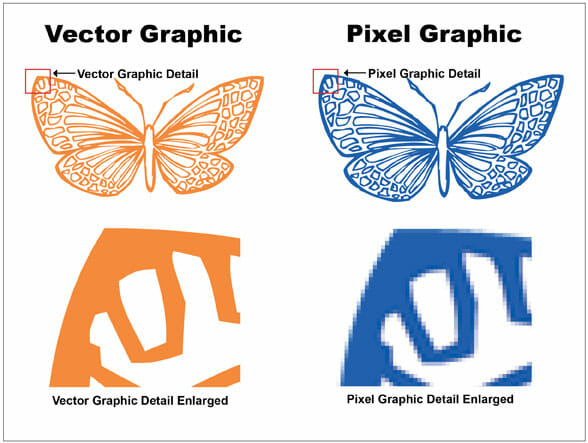There is a world of difference between graphic file formats…
If you want your logo to be reproduced in a large-print format…say a vehicle wrap, signage, banner or billboard, you definitely need to develop it as a vector-based graphic.
This is because a vector graphic can be hugely enlarged (up scaled) with no loss of resolution. That means the exact same vector graphic file can be used on a postage stamp or a billboard. Vector graphics are made by using points (vectors) and paths to create expandable shapes. Typically, vector graphics are created using Adobe Illustrator (my preference), Corel Draw, Freehand…think “drawing” program. Look for an .eps file format extension.
On the other hand, creating a logo in PhotoShop, for instance, will create a pixel-based graphic file, which cannot be enlarged beyond the standard for which it was created. So, for example, if a four inch by four inch pixel-based file is created for the web it will need to have 72 dots (pixels) per inch (dpi), while that same file created for print production will need at least 300 dpi. Any attempt to enlarge a pixel-based file beyond those parameters will cause the resulting image to look “pixelated.” PhotoShop is the most common application used for creating pixel-based file formats…think “paint” program. Common file formats include: .psd, .jpg, .gif, .png. The last two are web-based files.
The following graphic illustrates the basic difference between vector-based and pixel-based graphics.
